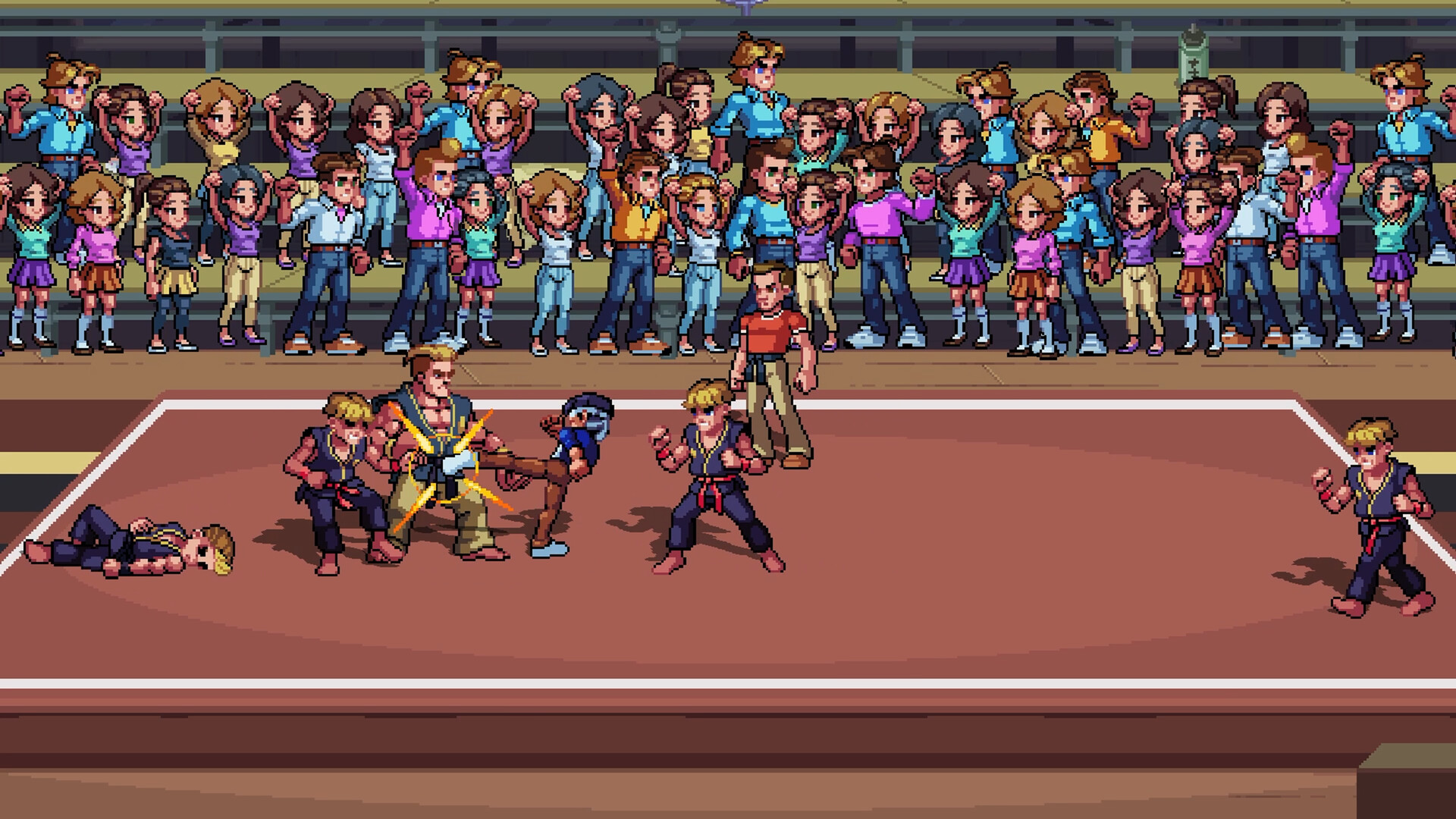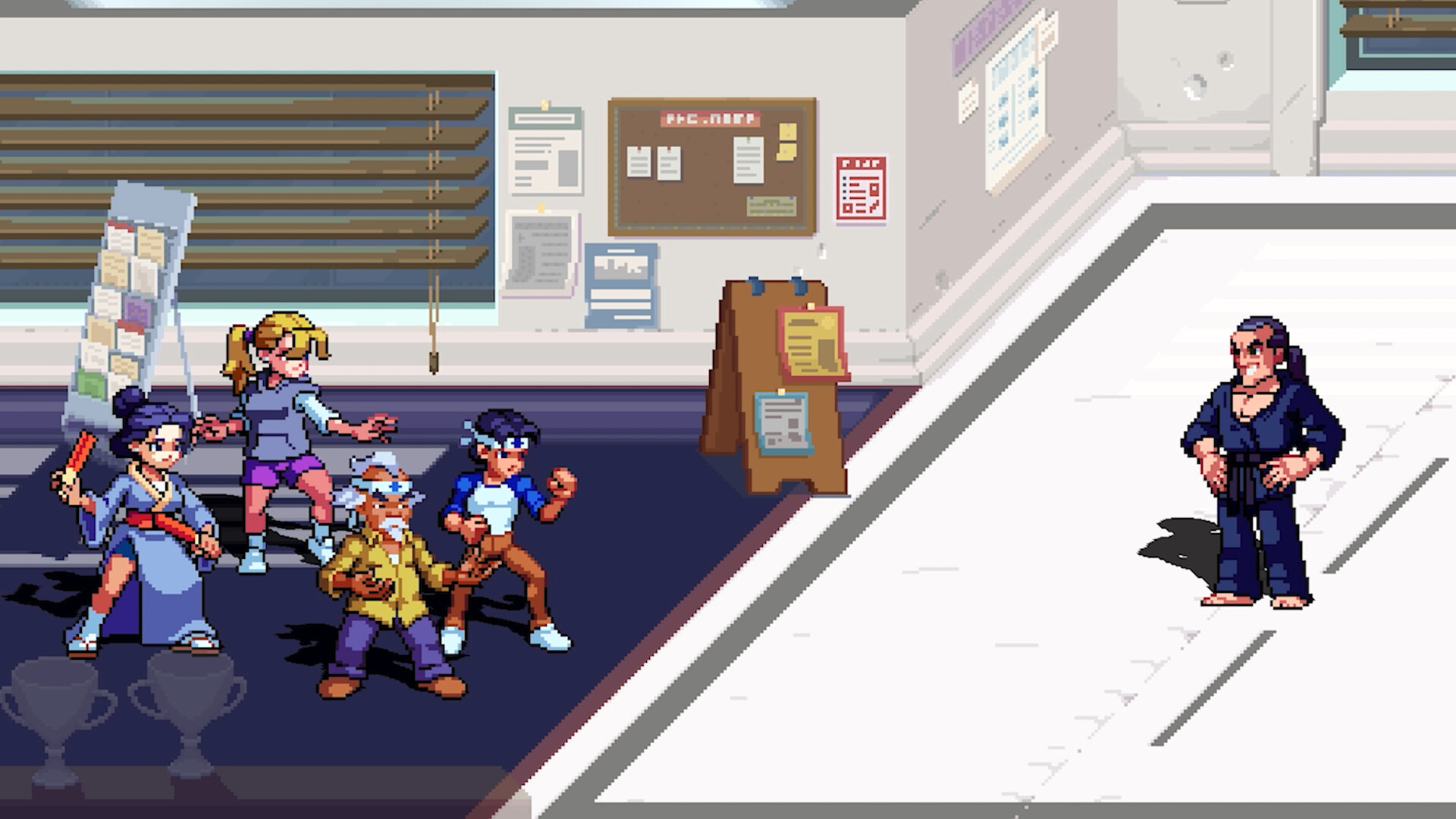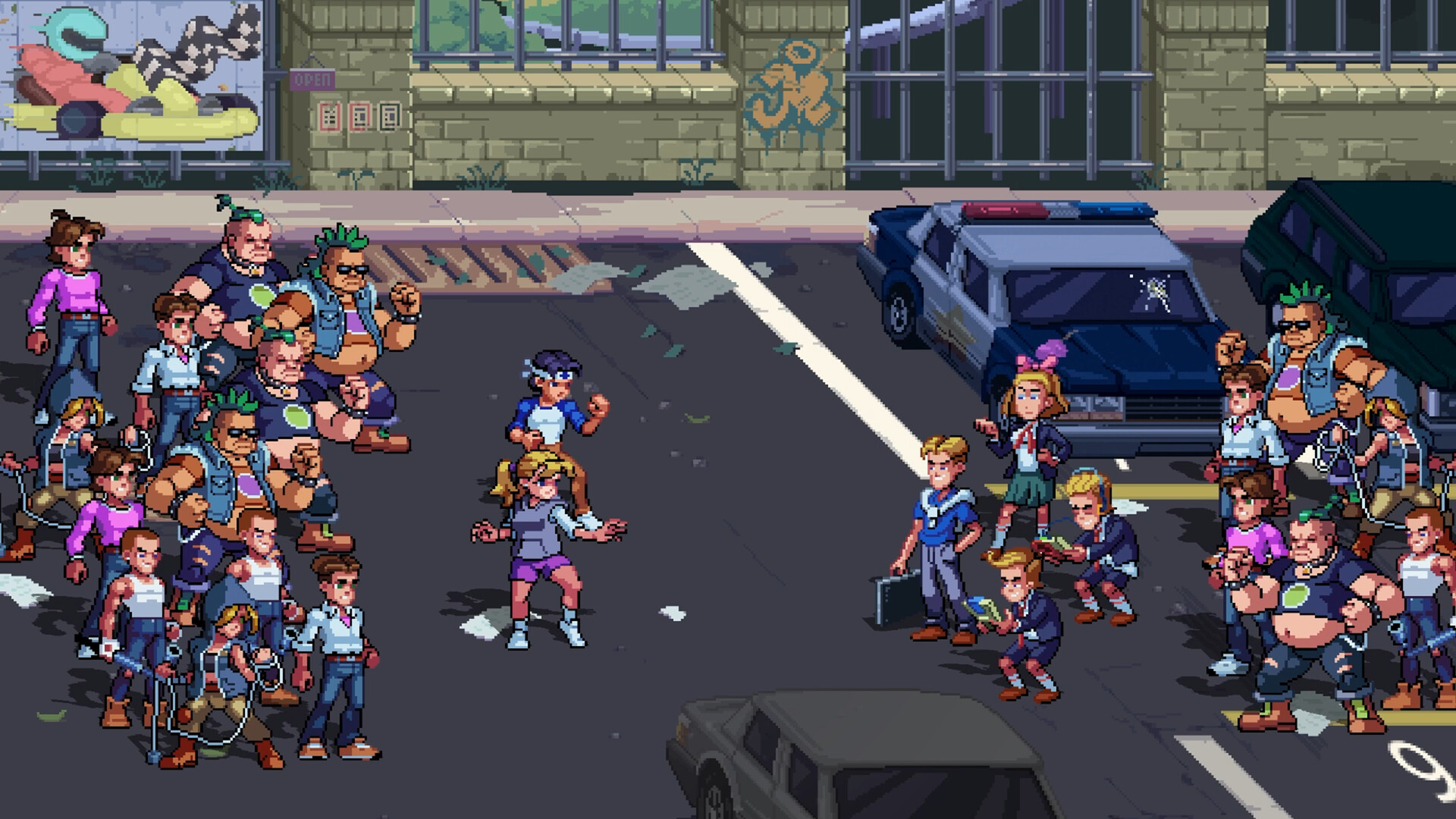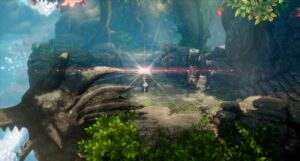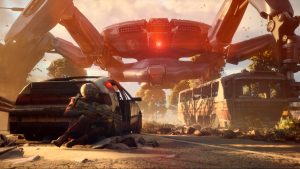
A good beat ’em up is hard to turn down, and in this new golden age for the genre, we’re getting quite a few of those with surprising frequency. Whether The Karate Kid: Street Rumble is going to be able to match similar heights is anyone’s guess, but with how it’s adapting a beloved property, the crunching combat that it looks to be touting, and the striking retro aesthetic it boasts, it’s hard not to be optimistic about its chances. Recently, we had the chance to reach out to its developers at Odaclick Game Studio with some of our most burning questions about The Karate Kid: Street Rumble. Below, you can read our interview with product manager Sebastian Bazelmans.
"We were excited to work with the Karate Kid franchise and integrate it with this genre, as we saw a great fit for it."
The beat ’em up genre has enjoyed an incredible resurgence in recent years, which, combined with the obvious draw of the Karate Kid IP, means there’s going to be a lot of eyes on The Karate Kid: Street Rumble. Does that bring added pressure?
We didn’t feel pressured by the popularity of the beat ’em up genre. On the contrary, we saw it as a great opportunity to put our own twist on an established market. At the start of the project, we played many beat ’em up games, both classic and modern. After our analysis, we came up with the “Focus bar,” a dynamic resource that can be used both defensively and offensively, rewarding an aggressive playstyle and changing the classic playability of beat ’em ups. We were also excited to work with the Karate Kid franchise and integrate it with this genre, as we saw a great fit for it.
The game features a gorgeous retro 16-bit aesthetic. What was the process like of landing on this look for the game? What other alternatives did you consider?
From an art direction perspective, our goal was to capture the essence of nostalgia from the golden age of beat’em ups, especially considering this IP originated in that era. Once this direction was decided, the rest of the process became simpler: we needed to blend the old-school aesthetic with modern mechanics and techniques. To achieve this, we implemented combos with fluid animations and strong keyframes, along with vibrant colors in the visual effects, while always maintaining a limited color palette.
Pixel art was our first choice, although we explored various alternatives and styles during development. We experimented with smaller designs, more cartoonish ones, and even some more realistic styles. Each of these styles affected the design of the characters, environments, and their color palette, influencing what we wanted to convey with our game. Ultimately, we felt we made the right decision with the chosen direction for the project. As fans of the genre, we couldn’t resist paying homage to iconic games like TMNT.
"Pixel art was our first choice, although we explored various alternatives and styles during development."
The Karate Kid: Street Rumble is going to cover the story of the entire original trilogy, but was there ever a discussion within the development team to perhaps tell a different story set in the same universe? What drove the decision to retell those iconic stories?
The original idea was to make a game where you started a new character in the world of the Karate Kid, selecting which dojo you wanted to join and learning new abilities with the iconic characters as NPCs. Ultimately, we decided to focus on the nostalgia and love for the original trilogy considering this is its 40th Anniversary since its inception. This way we could deliver to fans a way for them to connect more intimately with the original story and allow the players to experience the glory that it is.
What can you tell us about the combat in The Karate Kid: Street Rumble? Should players expect a variety of karate moves and combos? This being a beat ’em up, what role will weapon pickups play?
We wanted to give players freedom when exploring their moves and the combat system of the game. Every character has multiple combos mixing light, heavy, and signature moves, as well as passives that level up with your character. Additionally, each playable character has different play styles, allowing the player to explore different ways to beat the game. The game doesn’t feature weapon pickups, this decision was made early in development as we felt it didn’t fit the franchise.
What should players expect from the different stages they’ll be going through in the game? How interactive will each stage be? What kind of level of detail should players expect?
Each of the stages represents iconic moments from the three movies. It was very important for us to capture the feeling of the original story in our detailed pixel art. To achieve this, we conducted extensive research on the movies themselves and the 80s culture. Players will find a high level of detail and numerous small easter eggs. If a few kids ask their parents to go to an arcade shop after playing our game, it means we achieved our objective.
"We wanted to give players freedom when exploring their moves and the combat system of the game. Every character has multiple combos mixing light, heavy, and signature moves, as well as passives that level up with your character."
Roughly how long will an average playthrough of the game be?
Completing the story once should take a few hours, but that’s only a fraction of the full content of the game! You’ll need to go back and play more to see all the game’s content including playing as the other characters, mastering their unique moves, and trying out additional game modes.
Do you plan on also offering an online co-op option down the line?
While we aren’t in a position to discuss confidential plans, the success of the franchise can certainly open up a lot of opportunities for potential offerings down the road!








